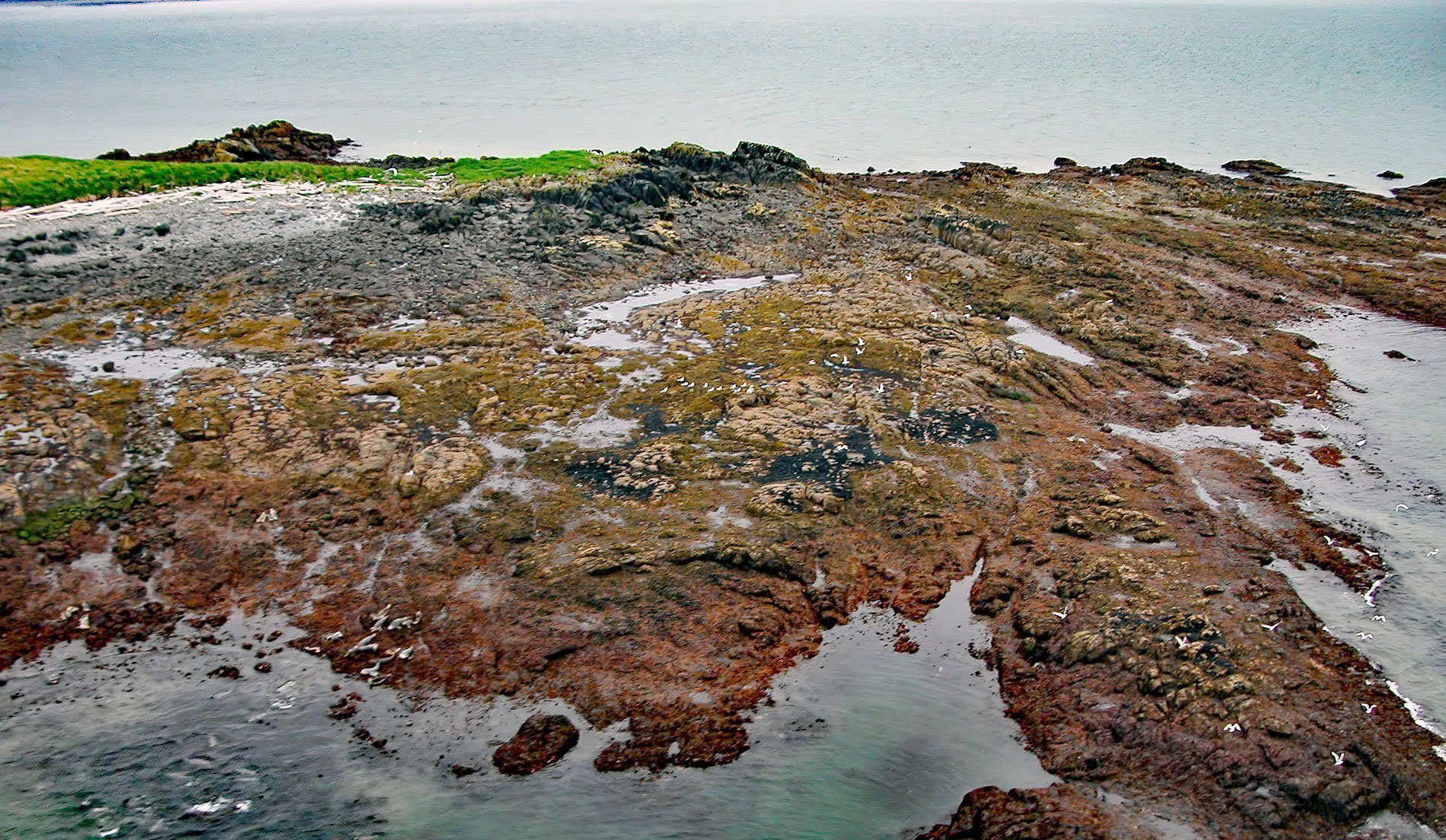Shakun Islets is a group of grass-covered islands and submerged reefs that extend north to south for 1.8 miles (2.9 km) at the entrance of Swikshak Bay in Shelikof Strait on the northeast coast of the Alaska Peninsula in Katmai National Park and Preserve, about 108 miles (174 km) southwest of Homer and 57 miles (92 km) northwest of Kodiak, Alaska. The name is a transliteration of ‘Kamen Shakhun’, meaning Shakun Rock presumably for the largest islet, published in 1852 by Mikhail Tebenkov of the Imperial Russian Navy. The name Shakun Islands was first published for the entire group by the U.S. Coast and Geodetic Survey in 1943. The Shakun Islets comprise igneous intrusive rocks that formed during the late Miocene to Pliocene, or about 10 to 3 million years ago. The rocks are mostly erosion-resistant granodiorite and quartz diorite.
Sea otters are keystone predators within the nearshore community. Higher trophic level avian, terrestrial, and pelagic predators such as bald eagles, brown bears, wolves, sharks, and killer whales feed on them. Sea otters are prolific in and around the Shakun Islets and were hunted to near extinction in the 1800s by Aleuts for Russian-American Company fur trading stations at Afognak, Douglas, and Kukak. The sea otter population recovered and recent observations have noted aggregated rafts with hundreds of individuals among the Shakun Islets and the population may have reached a food-limited status. Sea otters have developed strategies to minimize predation such as vigilant behavior, group rafting, and using islands and reefs for hauling out. Sea otters usually rest at sea and may rest on shore when threatened by marine predators.
The islets are about 2.5 miles (4 km) off the mainland coast near Swikshak Lagoon, and despite the distance offshore, are frequented by coastal brown bears that swim across from the mainland to forage for food. The brown bears of the Katmai coast are known to dig for razor clams from exposed intertidal sand flats and to use offshore islands to access bird eggs and marine mammals. They also scavenge for carcasses washed up by the surf and it is not uncommon to see several dozen bears feeding on one whale carcass. Sea otters, harbor seals, and sea lions are known to haul out on the islets and reefs at Shakun and in 2015, remote cameras on the largest of the Shakun islands recorded bears eating shellfish and targeting harbor seals and sea otters. Read more here and here. Explore more of the Shakun Islets and Swikshak Bay here:

